Tarantula Spider
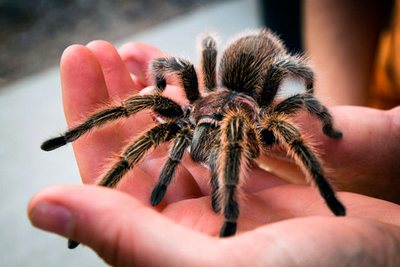
Content:
Definitely, the tarantula is not the most pleasant representative of the animal world. The tarantula scientific name originates from Italy of the Renaissance. Many of these spiders lived in the cities of Italy, and as a result, many people were bitten by them. People suffered from convulsive seizure conditions because of the bite of the tarantula. And the largest number of people bitten was in the Italian city of Taranto, which gave the name to this spider – the tarantula.
An interesting fact: in order to cure the effects of the bite, medieval physicians prescribed to dance a special dance – tarantella. This medieval Italian dance by its name and history is directly connected with the city of Taranto, and with the hero of our today’s article – the spider tarantula.
Description and Characteristics
What does a tarantula look like? A tarantula belongs to the type of arthropods, the arachnid class, the order of spiders. Tarantulas are the biggest spiders in the world. Like many arthropods, the body of a tarantula is covered with small hairs. There are two main parts in the structure of the body of a tarantula: the head and chest.
How many eyes does a tarantula have? The tarantula has 8 eyes. 4 of the tarantula’s eyes are located in a straight line, and the other 4 eyes are located in the form of a trapezium. Due to this arrangement of the eyes tarantulas have a viewing angle of 360 degrees. In addition to well-developed vision, tarantulas have an excellent sense of smell, with which they can sense potential prey at a long distance.
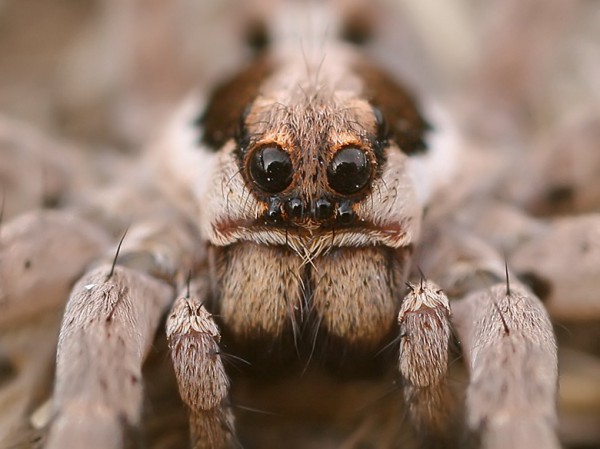
Tarantula face.
How big is a tarantula? The size of a tarantula varies from 2.5 to 10 cm. Like many insects in the world, tarantula females are usually bigger than males.
Throughout their lives, tarantulas change several times the peculiar chitinous “armor” that covers their body.
How many legs does a tarantula have? The tarantula has four pairs of long hairy legs, allowing the spider to comfortably move around the loose or even water surface.
A tarantula’s mandibles are covered with poisonous channels; they are very strong and serve as a means of defense and attack.
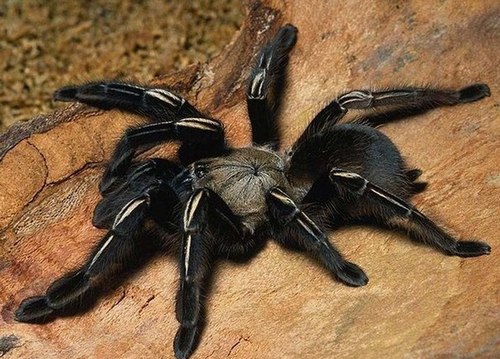
The color of the tarantula is usually brown, gray or black.
Habitat
Where do tarantulas live? Tarantulas live in a wide geographic range: Eurasia (but only its southern part), North Africa, the North, and South America, and Australia. Steppe, forest-steppe, desert, and semi-desert climatic zones are chosen as places of their residence. Since tarantulas love heat, they don’t live in the northern cold latitudes.
Lifestyle
Tarantulas have a lonely and nocturnal lifestyle. Male and female tarantulas meet with each other only during the mating season. All male tarantulas are hostile to each other.
During the day, these spiders hide in deep, vertical holes, while at night they go hunting.
Diet
What do tarantulas eat? Tarantulas are notorious predators, they eat small insects and amphibians: caterpillars, bear cubs, crickets, beetles, cockroaches, small frogs, etc. Tarantulas are making an ambush in the shelter, and then rapidly attacking. By attacking, they paralyze the prey with their poison, which later turns its insides into a nourishing liquid, and then the tarantula sucks it out like a “cocktail”.
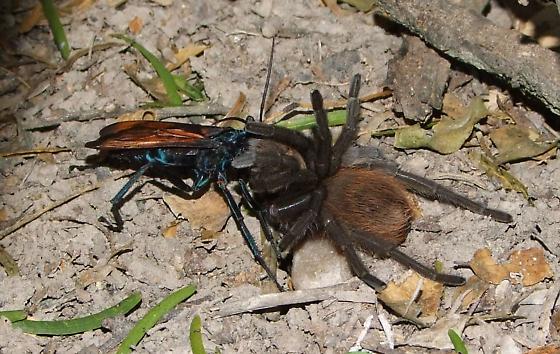
The process of absorption of food by a tarantula can take several days. Yet in general they are not very voracious and can live without food for a long time, the main thing is to have access to water.
Lifespan
How long do tarantulas live? The life span of tarantulas depends on their species. There are long-livers among them, for example, the tarantula of the species Aphonopelma can live up to 30 years, which is very much for an insect. The other tarantulas live less, on average 5-10 years. Moreover, the lifespan of female tarantulas is usually longer than that of males.
Species
There are about 200 tarantula species. We will describe the most interesting of them.
Apulian Tarantula
The Apulian tarantula lives in the south of Europe and in North Africa. It is approximately 7 cm in length. Unlike other types of tarantula, the Apulian tarantula does not weave cobwebs.
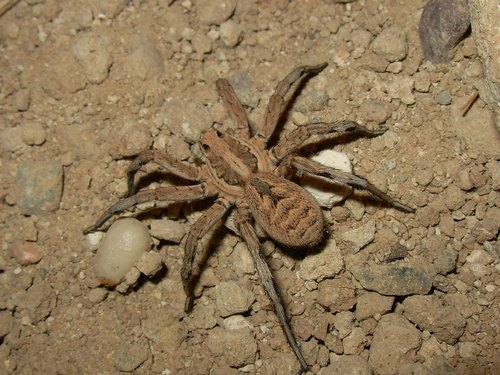
South Russian Tarantula or Misgir
This tarantula lives in the south of Russia, Belarus, Ukraine, in the countries of Central Asia. This type of tarantula is small; its size rarely exceeds 35 mm. The South Russian tarantula has a special dark cap. With the onset of cold weather, these tarantulas are buried deep in their burrows, where they successfully hibernate. And with the onset of spring, they get to the surface.
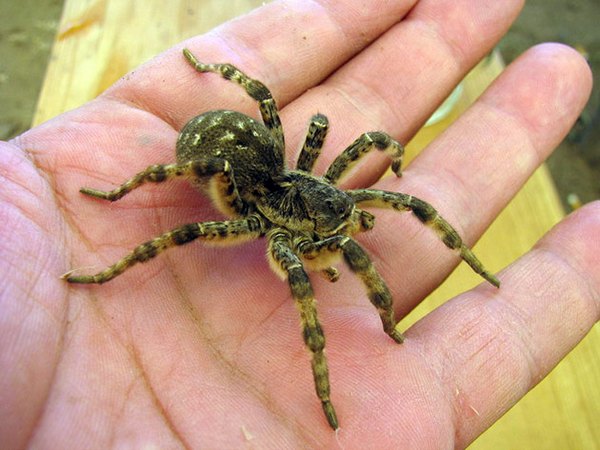
Spanish Tarantula
This tarantula also lives in the south of Europe, in Spain, Italy, Portugal, and in North Africa. It was once considered a subspecies of the Apulian tarantula but was later defined as a separate species.
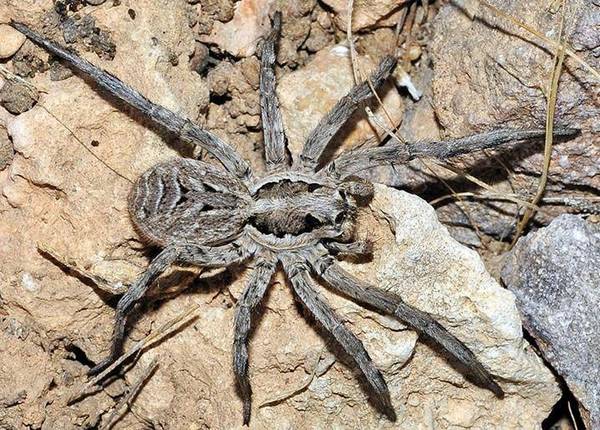
Brazilian Tarantula
This species of dark brown tarantula lives in the tropical forests of South America, Brazil, Paraguay, and other South American countries. The Brazilian tarantula has a light longitudinal strip of a yellowish tint on the head.
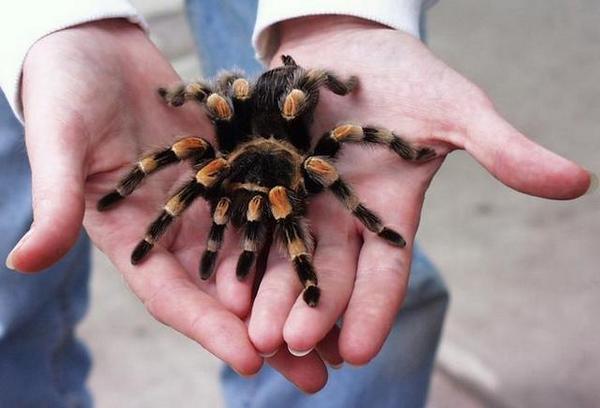
Reproduction
The mating season in many species of tarantulas takes place at the end of the summer. The sexually mature tarantula male weaves a web and then begins rubbing his abdomen against it. As a result of this, he ejaculates the seminal fluid, which falls on the web. Then the male immerses in it his pedipalps, which absorb it, and become ready for fertilization.
Only after this, the male begins the search for females. Having found his “lady”, the male begins a kind of mating dance. If the female replied to the “gentleman”, he plunges his pedipalps into her cloaca and fertilizes her. Then it is very desirable for the male to leave his “damsel” as soon as possible. Because female may eat her “cavalier” for a dinner, as it happens in praying mantises and some other insects.
The female tarantula begins to weave a special cocoon, where she lays her eggs.
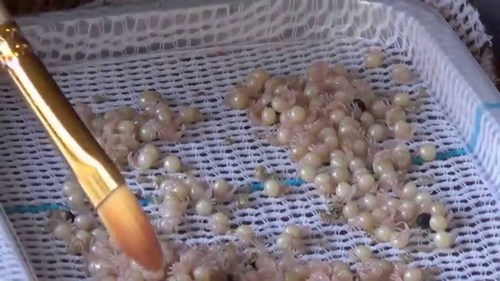
Tarantula eggs.
Eggs ripen for 40-50 days, and small tarantulas hatch from them. Baby tarantulas begin to grow rapidly, and by 2-3 years reached sexual maturity.
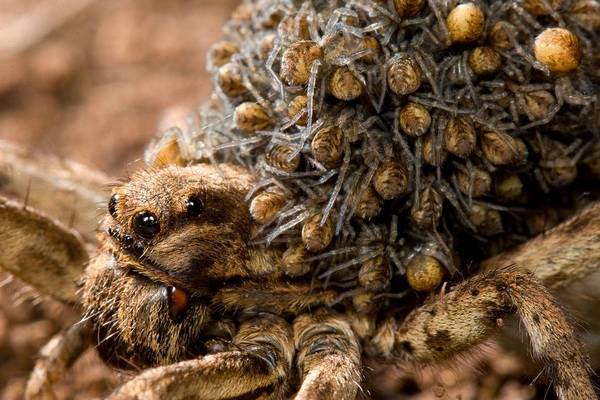
Dangerous to Humans
The tarantula itself is unlikely to attack a human. Yet this can be forced by the actions of the man. For example, if you accidentally touch the spider, the tarantula can bite as a measure of self-defense.
A tarantula spider bite is not dangerous for a healthy person, except for children and people with allergic reactions. It is necessary to seek professional medical help in such situation as soon as possible.
Symptoms of a tarantula bite and their consequences may look like this:
- local pain at the site of the bite, redness, and swelling.
- drowsiness, lethargy, general poor health.
- a sharp, but the short-term increase in temperature.
- in some cases, there may be nausea and vomiting.
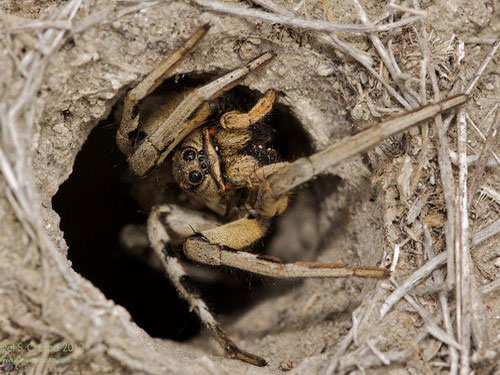
First Aid for Tarantula Bite
First of all, it is necessary to wash the wound with antibacterial soap and treat it with an antiseptic. Then cool the bite with an ice pack and take antihistamines. Of course, you should seek professional medical assistance.
Tarantula as a Pet: Care and Maintenance. What to Feed Tarantulas at Home?
Tarantulas can live in an aquarium or a terrarium. At the bottom of the tank, it is necessary to pour a substrate consisting of a mixture of sand, clay, and earth. Beside this, a terrarium for a tarantula should be equipped with an automatic water dispenser with fresh water and a shallow pool.
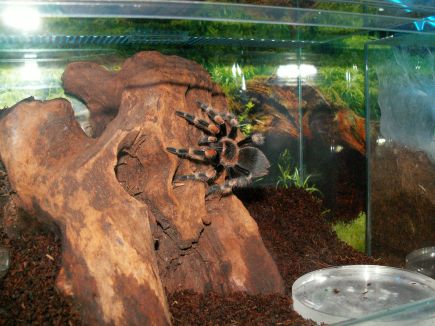
The optimum temperature for keeping these spiders should be 25-27 °C (77 – 80.6°F). You can feed the tarantulas with small pieces of fresh beef, as well as live cockroaches, frogs if you can catch them. Yet fortunately, they do not need to be fed often. So for an adult healthy tarantula, it will be normal to eat once a week.
It is also important to remember that only one tarantula can be kept in a terrarium. If there are two – only the strongest will survive as a result of constant skirmishes.
Interesting Facts
- The blood of a tarantula is the best antidote from its poison, so in order to neutralize the action of the toxin, you can smear the wound with the blood of a crushed spider.
- Tarantulas are able to regenerate lost limbs. So if it tears off a paw, then for some time a new one will grow in its place, although it will be slightly smaller in size.
- In the mating season, the males of tarantulas in search of females can move over long distances.
- Some people ask: do tarantulas jump? Actually, there is a myth that “there are tarantulas that can jump 3-4 feet”. Yet in reality, no tarantula researcher has observed such an event.
References and Further Reading
- “Family: Theraphosidae Thorell, 1869”. World Spider Catalog. Natural History Museum Bern. Retrieved 28 April 2019.
- “Currently valid spider genera and species”, World Spider Catalog, Natural History Museum Bern, retrieved 25 April 2019
- Blaikie, Andrew J; John Ellis; Roshini Sanders; Caroline J. MacEwen (24 May 1997). “Eye disease associated with handling pet tarantulas: three case reports”. BMJ. 314 (7093): 1524–5. doi:10.1136/bmj.314.7093.1524. PMC 2126783. PMID 9183200.
- Lewis, Tanya (17 October 2014). “Goliath Encounter: Puppy-Sized Spider Surprises Scientist in Rainforest”. LiveScience.com. Live Science. Archived from the original on 4 December 2014. Retrieved 29 November 2014.
- Fabre, Jean-Henri; Translated by Alexander Teixeira de Mattos (1916) The Life of the spider, Dodd, Mead, New York.

Author: Pavlo Chaika, Editor-in-Chief of the journal Poznavayka
When writing this article, I tried to make it as interesting and useful as possible. I would be grateful for any feedback and constructive criticism in the form of comments to the article. You can also write your wish/question/suggestion to my mail pavelchaika1983@gmail.com or to Facebook.

